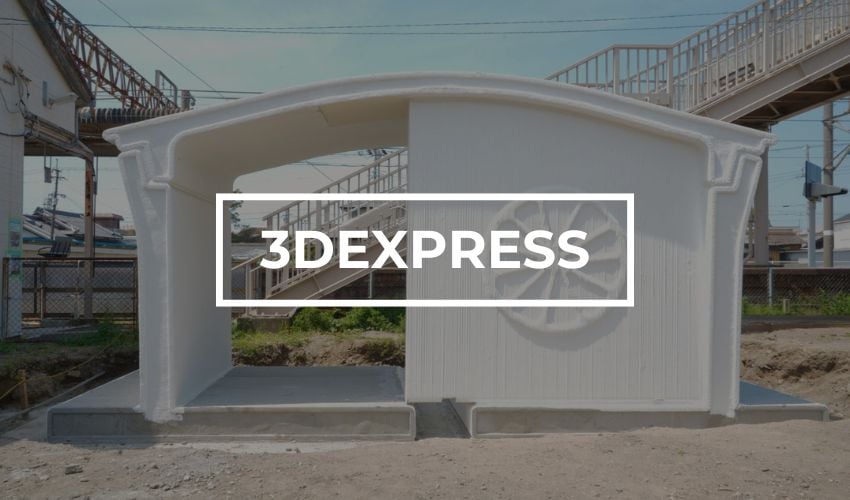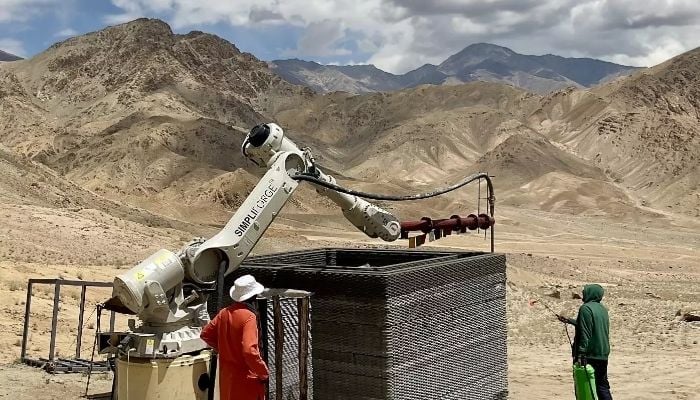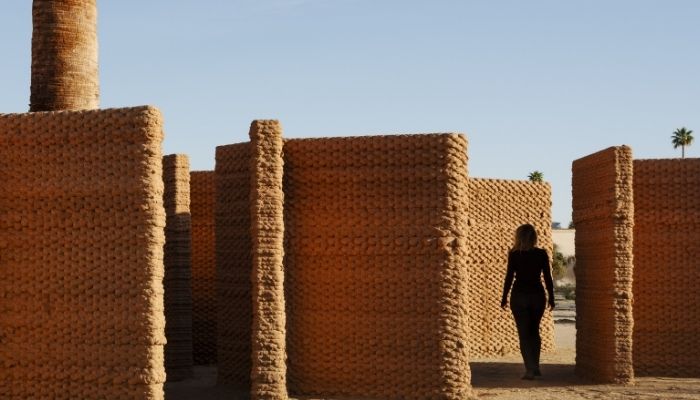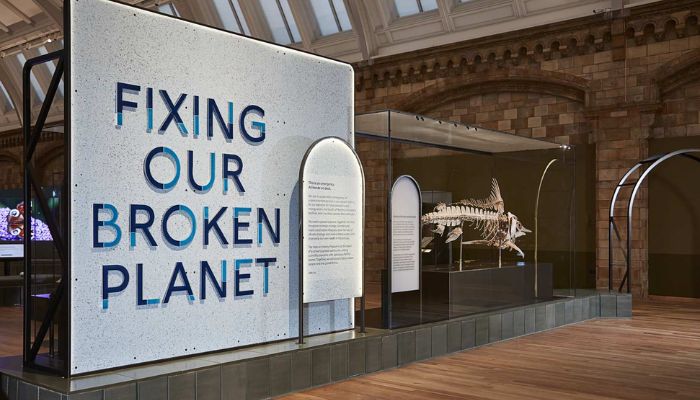
This week there was many news on the additive manufacturing market! And we will start with the progress of a project that we reported a few weeks ago: In Japan, the 3D -printed structure, which is used as protection in a train station, ended! The teams spent six hours together to put together the various 3D printed concrete parts. Next, learn how the 3D printing veterinarians helps before moving to the mountains, where the Indian Institute of Technology in Hyderabad has succeeded in designing a 3D-printed military bunker at an altitude of over 3,300 meters: a world first! Finally we will close two messages from the art world and see how 3D printing revolutionizes it.
Japan's 3D printed train station is ready
We announced it a few weeks ago: Japan turned to the concrete 3D printing to modernize some of his stations and offer protective helpers using a 3D printer. And the project moves quickly! This week we could see the first pictures of the structure in the city of Arida in the Hatsushima station. The 10 square meter, 2.6-meter-high protection was created using a solution from the manufacturer Serendix. According to the project teams, it took less than a week up to 3D printing the different blocks of the shelter, which were then put together in less than 6 hours on site. The facade shows reliefs that represent symbols of the region like mandarins and fish. This means that the 3D printed train station is more or less finished. The goal is now to install a ticket in the structure – for which is planned in July 2025. You can see the installation in the following video:
https://www.youtube.com/watch?v=edr8sxivbzs
More practical training for veterinarians
It is important for future veterinarians to gain practical experience before entering the profession. For this reason, the College of Veterinary Medicine from Oklahoma State University recently offered its students a 3D-printed horse skeleton to enable practical practice. For this, the Faculty of Edmon Low Creative Studios requested. His director Shannon Austin explained, “They expressly mentioned that animal skeletons are difficult to preserve and are unaffectedly expensive, and they asked whether I could help them with 3D printing of a model.” She adds that the job not only sails smoothly, including the decision as to whether they should squeeze together at once or in several parts. She says that the pressure lasted three days and the removal of the supports lasted four hours. The parts were then put together with hot glue. Shannon Austin Castle, “With this model, veterinary students can not only learn about the morphology of horses by simply looking at pictures in a textbook or on a screen, but they can now physically manipulate and observe the subtleties of the skeletal structure of the animal.”

Photo credit: Shannon Austin
The first 3D printed bunker in the Himalaya
We have reached a new milestone for engineering and defense! In cooperation with Simpliforge Creations and the Indian army, the Indian Institute of Technology in Hyderabad has succeeded in the world's highest 3D-printed military bunker at an altitude of over 3,300 meters. The bunker was in the Himalaya region and was a technological challenge due to the extreme conditions of the location. Low temperatures, low humidity and low oxygen levels required a specific material design, and the team developed a concrete mix that is based on local aggregates. The construction lasted five days and printed 14 hours, which demonstrated the feasibility of additive manufacturing in such demanding environments. Those who are known as Prabal Project informed the Indian media that the performance of India intensified and paved the way for the construction of the infrastructure on remote terrain.

Photo credits: newsmeter
A 3D printed oasis in the coachella Valley
This year's Coachella Festival may be over, but interesting things are still going on in the valley! For example, the American artist and architect Ronald Rael, who exhibits his work Adobe Oasis in the Coachella Valley as part of the Desert X 2025 exhibition. It is an installation that combines the construction techniques of the trunk units with digital manufacturing technologies. The architect was inspired by the traditional mud construction of the San Luis Valley (Colorado), an area in which the border between Mexico and the US -Rael was marked until 1848 to reinterpret Adobe with structures that cause the texture of the tribes of local palm trees. The work presents itself both as an art and architectural experiment, as it suggests an ecological alternative to industrial materials in construction. The structure will be issued by May 11th when the desert X 2025 exhibition ends.

“Adobe Oasis” by Ronald Rael combines tradition and technology (photo credits: desert X)
3D printed ceramic in the London Natural History Museum
Let us continue with further 3D print messages from the art world! Special attention was paid to the sustainable construction of the exhibition space in the new exhibition “Fixing Our Broken Planet” of the Natural History Museum. The integrity of the centuries -old museum had to be preserved and at the same time remained flexible. Here Wasp came into play: it created ten flexible modules for the exhibition with its 3D printing technology. The WASP 40100 3D printer produced all the necessary components in three months using a robot arm as an extruder. We believe that the selection of additive manufacturing is particularly suitable for the topic of the exhibition – sustainable life to save the climate of our planet.

The exhibition in London (photo credits: Lamáquina on LinkedIn)
What do you think of the finished 3D printed train station in Japan? Let us in a comment below or on our knowledge LinkedInPresent FacebookAnd Twitter Pages! Don't forget to register for our free weekly registration Newsletter hereThe latest 3D printing messages directly to your inbox! You can also find all of our videos on our YouTube Channel. If you are interested in 3D print messages in the automotive and transport sector, visit our committed page HERE.